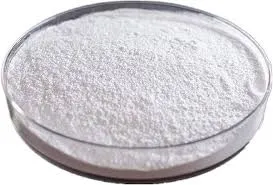
ನವೆಂ . 18, 2024 09:48 Back to list
Properties and Applications of Hydroxy Methyl Propyl Cellulose in Various Industries
Understanding Hydroxy Methyl Propyl Cellulose Properties and Applications
Hydroxy Methyl Propyl Cellulose (HMPC) is a versatile compound derived from cellulose, which is the primary structural component of plant cell walls. HMPC is a modified cellulose ether that combines the properties of hydroxypropyl cellulose and methyl cellulose, granting it unique characteristics that make it highly useful across various industries. This article explores the composition, properties, and diverse applications of HMPC, showcasing its significance in contemporary practices.
Composition and Characteristics
HMPC is synthesized through a chemical modification process that involves the reaction of cellulose with an alkylene oxide and an etherifying agent. This process introduces hydroxypropyl and methyl groups into the cellulose structure, enhancing its solubility in both hot and cold water. The degree of substitution of these groups can be adjusted during the manufacturing process, allowing for tailored properties depending on the intended use.
One of the most notable characteristics of HMPC is its ability to form stable gels and films, along with its excellent thickening and stabilizing properties. In addition, HMPC has a low toxicity profile and is considered safe for use in food and pharmaceutical products, making it an ideal ingredient in many formulations.
Applications in Various Industries
hydroxy methyl propyl cellulose

1. Pharmaceuticals In the pharmaceutical industry, HMPC is widely used as a binder, stabilizer, and film-forming agent in tablet formulations. Its gel-forming ability helps control the release of active ingredients, enhancing the efficacy of medications. Additionally, HMPC is employed in creating suspensions and emulsions, where it helps maintain product consistency and stability.
2. Cosmetics and Personal Care HMPC plays a crucial role in the formulation of cosmetic and personal care products. Its thickening and emulsifying properties contribute to the texture and feel of creams, lotions, and gels. Additionally, it helps stabilize emulsions, ensuring that products maintain their quality over time. The non-irritating nature of HMPC makes it suitable for sensitive skin applications.
3. Food Industry In the food sector, HMPC serves as a thickening agent and stabilizer in various food products. It aids in improving the texture of sauces, dressings, and desserts, enhancing mouthfeel and viscosity. Furthermore, it is used as a fat replacer in low-calorie foods, contributing to the overall health appeal of products without compromising on taste.
4. Construction Beyond its applications in food and pharmaceuticals, HMPC is also gaining traction in the construction industry. It is used as a thickening agent in cement-based formulations, providing improved adhesion and workability. By enhancing the flexibility and water retention of mortars, HMPC contributes to the longevity and durability of construction materials.
Conclusion
Hydroxy Methyl Propyl Cellulose is a remarkable compound that showcases the intersection of natural materials and modern science. Its unique properties make it an invaluable ingredient in a variety of industries, ranging from pharmaceuticals and cosmetics to food and construction. As research continues and new applications are discovered, HMPC is poised to become even more prominent in the formulation of products that prioritize quality, safety, and performance. Ultimately, as consumers grow more aware of the ingredients in their products, compounds like HMPC that are derived from natural sources and offer multifunctional benefits will continue to thrive in the market.
-
Versatile Hpmc Uses in Different Industries
NewsJun.19,2025
-
Redispersible Powder's Role in Enhancing Durability of Construction Products
NewsJun.19,2025
-
Hydroxyethyl Cellulose Applications Driving Green Industrial Processes
NewsJun.19,2025
-
Exploring Different Redispersible Polymer Powder
NewsJun.19,2025
-
Choosing the Right Mortar Bonding Agent
NewsJun.19,2025
-
Applications and Significance of China Hpmc in Modern Industries
NewsJun.19,2025







